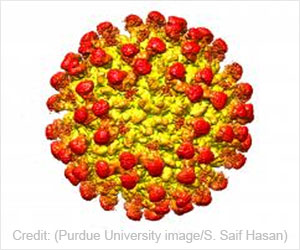Climate change disrupts HIV prevention and care, worsening access to services and increasing health risks. Addressing both issues is crucial for global health equity.

Climate change is creating new challenges for HIV prevention and care, according to a recent review in Current Opinions in Infectious Disease. University of Toronto researchers analyzed 22 studies on HIV outcomes in the context of climate change, uncovering multiple connections between extreme weather events and disruptions in HIV prevention and care (1✔ ✔Trusted Source
Climate change and extreme weather events and linkages with HIV outcomes: recent advances and ways forward
).
Climate Change Disrupts HIV Prevention
“Climate change impacts HIV prevention through several mechanistic pathways,” says lead author Carmen Logie, Professor at the Factor-Inwentash Faculty of Social Work (FIFSW) at the University of Toronto and the United Nations University Institute for Water, Environment, and Health. “Extreme weather events cause structural damage to health care infrastructure and increase migration and displacement, both of which disrupt access to HIV clinics for prevention and testing. We also see increases in practices that increase HIV risk due to climate change-related resource scarcity.”
The study also uncovered important implications for HIV care among those already living with HIV, such as reduced viral suppression, poorer treatment adherence, and worse physical and mental wellbeing.
“Extreme weather events present new challenges with access to HIV care and treatment adherence,” said co-author Andie MacNeil, PhD student at the FIFSW at the University of Toronto. “Multilevel strategies are needed to mitigate the effects of climate change on HIV care, such as long-lasting antiretroviral therapy, increased medication dispensing supplies, and community-based medication delivery and outreach programs.”
The authors highlighted several important gaps in the existing literature, including the lack of research on specific extreme weather events (e.g., extreme heat, wildfires, hurricanes) and in geographic areas with high climate change vulnerability and increasing HIV rates (e.g., the Middle East and Northern Africa).
They also described a persisting lack of knowledge on extreme weather events and HIV among key marginalized populations, including sex workers, people who use drugs, and gender diverse persons, as well as how extreme weather events interact with intersecting forms of stigma.
The researchers are hopeful that these findings can help offer ways forward for research, policy, and practice.
Advertisement
“Innovative HIV interventions, such as long-acting PrEP, mobile pharmacies and health clinics, and interventions that reduce food and water insecurity may all contribute to improving HIV care during extreme weather events. More research and evaluation is needed to test climate-change informed HIV prevention and intervention strategies,” said Logie. “The integration of disaster preparedness and HIV care provides new opportunities to optimize HIV care in our changing climate.”
Reference:
- Climate change and extreme weather events and linkages with HIV outcomes: recent advances and ways forward – (https://journals.lww.com/co-infectiousdiseases/fulltext/2025/02000/climate_change_and_extreme_weather_events_and.5.aspx)
Source-Eurekalert



